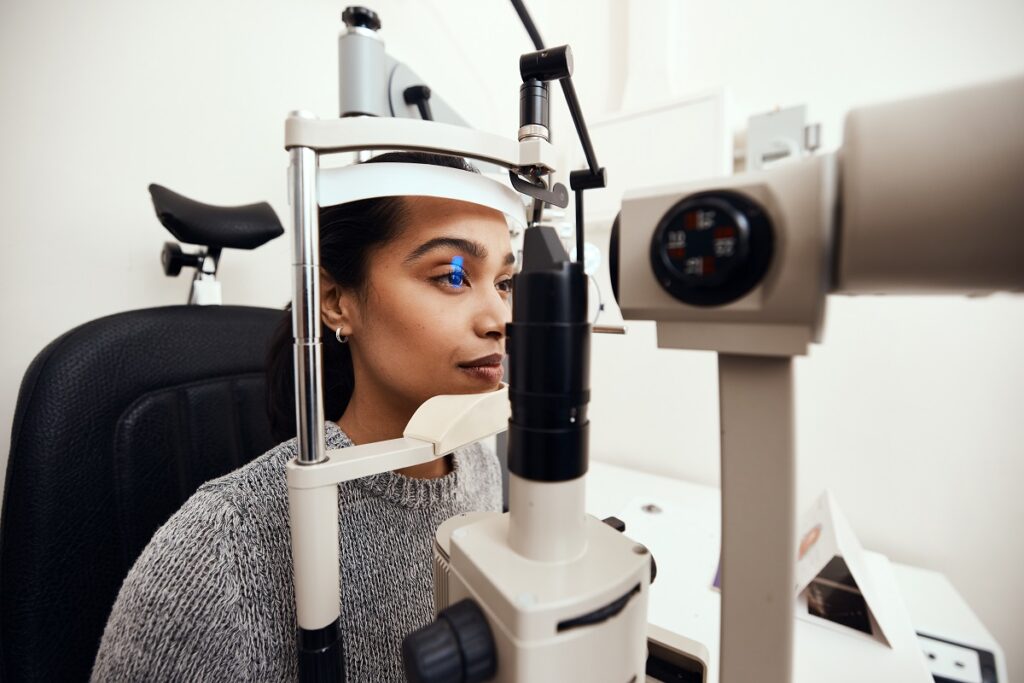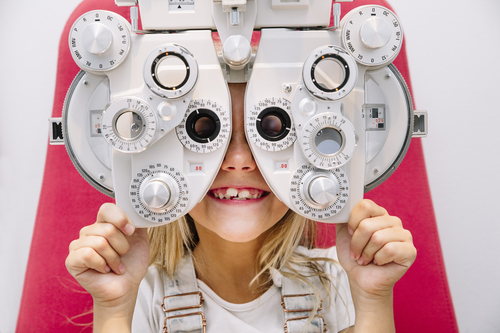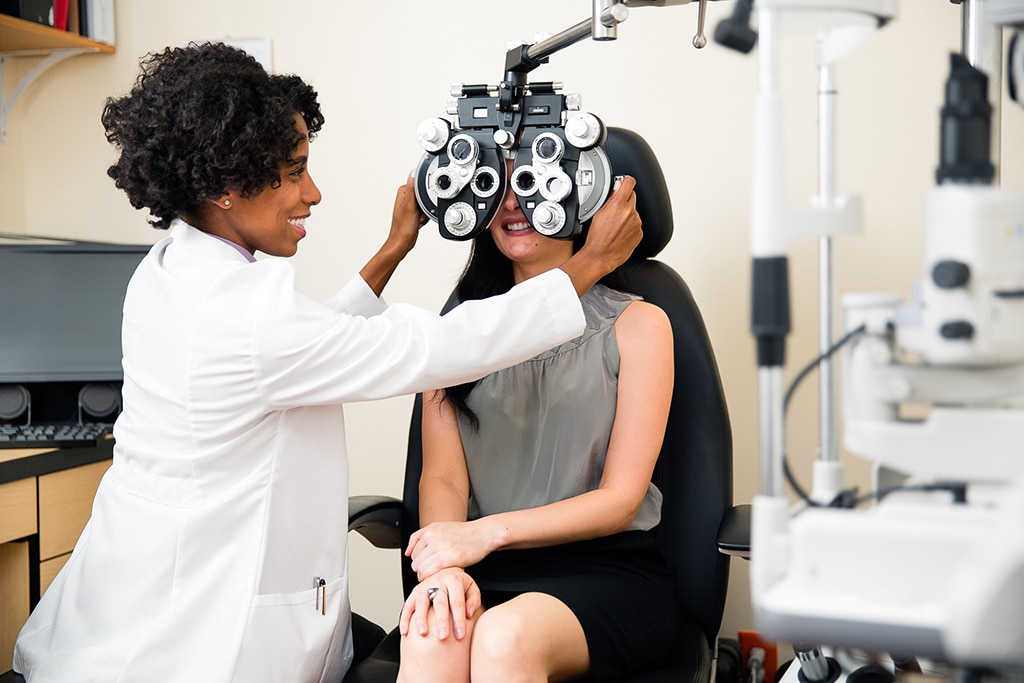How an Eye Doctor Can Help Avoid Vision Complications in Chino
How an Eye Doctor Can Help Avoid Vision Complications in Chino
Blog Article
Discovering the Newest Technical Advancements in Optometry and What They Mean for Optometrists
From the precision of Optical Comprehensibility Tomography to the nuanced insights offered by AI-driven analysis tools, these technologies are setting brand-new criteria in client evaluation and treatment. As these improvements permeate the method, eye doctors are encountered with the difficulty of embracing these devices to improve patient results.
Developments in Diagnostic Equipment
Progressing the field of optometry, developments in analysis devices have actually reinvented the way eye care specialists analyze and diagnose eye problems and visual disabilities. The previous decade has actually witnessed considerable technological advancements, making it possible for even more thorough and precise assessments.
Another key technology is the introduction of advanced corneal topography systems, which map the surface curvature of the cornea with accuracy. These devices are specifically valuable for fitting contact lenses and detecting corneal disorders. Digital retinal imaging has changed standard ophthalmoscopy, offering detailed, scenic views of the retina that help with thorough aesthetic assessments.
The advancement of wavefront aberrometry has also been vital, enabling the evaluation of refractive mistakes with unmatched precision (Eye Doctor Optometrist). This technology assists in customizing restorative lenses and improving surgical outcomes for refractive surgeries. Jointly, these analysis improvements empower eye doctors to provide superior patient treatment, ensuring early treatment and customized treatment approaches, eventually boosting visual health outcomes
AI in Individual Monitoring
Building on the foundation of advanced analysis devices, the unification of expert system (AI) in individual administration represents a transformative jump for optometry. AI systems are progressively employed to boost performance, precision, and customization in person treatment. By evaluating substantial amounts of information, AI can recognize patterns and anticipate potential eye conditions, making it possible for eye doctors to customize interventions much more efficiently. This capacity is vital in taking care of persistent eye diseases such as glaucoma and diabetic person retinopathy, where very early discovery and continuous tracking are key.
In addition, AI-driven systems promote structured person communications and administrative processes. Automated organizing, virtual assessments, and customized follow-up strategies not just enhance patient satisfaction yet also maximize time monitoring for experts. These systems can triage individuals based upon the necessity of their problems, ensuring that those in critical demand get timely attention.
Additionally, AI improves decision-making by supplying eye doctors with evidence-based recommendations and therapy paths. By incorporating data from electronic wellness documents, AI tools use insights that educate medical choices, reducing the risk of mistakes and enhancing patient outcomes. As AI proceeds to advance, its function in patient monitoring will likely broaden, reshaping the landscape of optometric care.
Advancements in Retinal Imaging
In the realm of optometry, retinal imaging has actually observed exceptional technological innovations that are improving analysis abilities and person treatment. Technologies such as Optical Comprehensibility Tomography (OCT) and fundus digital photography have actually revolutionized just how optometrists examine the retina and visualize. OCT, in particular, provides high-resolution, cross-sectional photos of the retina, enabling the comprehensive exam of its layers. This capacity is vital for early detection and administration of conditions like glaucoma, diabetic person retinopathy, and age-related macular deterioration.
Boosted imaging modalities like OCT angiography are additional refining analysis accuracy. This non-invasive method maps blood flow in the retina, supplying essential understandings into vascular health and wellness without the requirement for dye injections. Additionally, adaptive optics modern technology is being incorporated right into retinal imaging systems to deal with eye aberrations, supplying unprecedented picture clarity. Such innovations facilitate the recognition of minute retinal modifications that can represent illness development.
Moreover, improvements in expert system are augmenting retinal imaging by allowing computerized evaluation of huge datasets. These systems assist eye doctors in determining patterns a sign of pathology, thus improving diagnostic accuracy and effectiveness. Jointly, these technologies are transforming retinal imaging into a foundation of modern-day eye care, improving results and increasing healing opportunities.
Teleoptometry's Expanding Duty
Teleoptometry is significantly ending up being a crucial part of eye care, driven by advancements in data and diagnostic devices. As optometry welcomes electronic makeover, teleoptometry helps with remote appointments, permitting eye doctors to prolong their solutions past standard boundaries. This is especially advantageous in underserved and rural locations where accessibility to specialized eye care is typically limited. By leveraging high-resolution video clip conferencing and progressed retinal imaging, optometrists can conduct comprehensive eye examinations from afar, ensuring timely diagnosis and therapy.
The integration of fabricated intelligence (AI) further improves teleoptometry, enabling the analysis of visual information and helping in the discovery of ocular problems such as glaucoma and diabetic person retinopathy. AI-powered algorithms can rapidly translate complex imaging data, supplying optometrists with valuable understandings that bolster professional decision-making.
Furthermore, teleoptometry supports continuity of care via seamless combination with digital wellness records (EHRs), permitting optometrists to maintain thorough click here to find out more client backgrounds. This ensures that patients obtain customized and regular care even when consulting with different professionals.
Regardless of these benefits, obstacles continue to be, including making certain information security and taking care of patient assumptions. However, teleoptometry stands for a considerable stride in the direction of even more available, effective, and patient-centered eye treatment. As technology progresses, its role is positioned to expand additionally.

Future Patterns in Eye Care
A myriad of ingenious trends is set to improve the future of eye treatment, driven by technical advancements and the progressing needs of patients. One substantial pattern is the assimilation of expert system (AI) in diagnostics, which guarantees to boost the precision and effectiveness of eye examinations. AI formulas can evaluate large amounts of information from retinal pictures, potentially spotting conditions like diabetic retinopathy and glaucoma earlier than conventional methods.
In addition, individualized medicine is acquiring traction in optometry, with hop over to here hereditary testing informing customized therapy plans. This approach intends to maximize client end results by tailoring treatments to individual hereditary profiles. Wearable technology, such as smart contact lenses, is likewise on the horizon, supplying real-time surveillance of intraocular pressure or glucose levels, therefore providing continuous understandings right into ocular and systemic wellness.
The adoption of enhanced truth (AR) and virtual fact (VR) in training and patient education and learning is one more arising pattern. These technologies use immersive experiences that can improve understanding and abilities both for individuals and optometrists. As these fads progress, optometrists must remain abreast of technical improvements to offer sophisticated care, guaranteeing improved client end results and fulfillment in the vibrant landscape of eye treatment.
Verdict

Collectively, these analysis developments encourage eye doctors to supply superior person treatment, guaranteeing early intervention and tailored treatment strategies, ultimately enhancing aesthetic health results.

As these technologies proceed to advance, optometrists need to adjust and integrate them into practice, inevitably optimizing workflow performance and elevating the standard of eye treatment provided to people.
Report this page